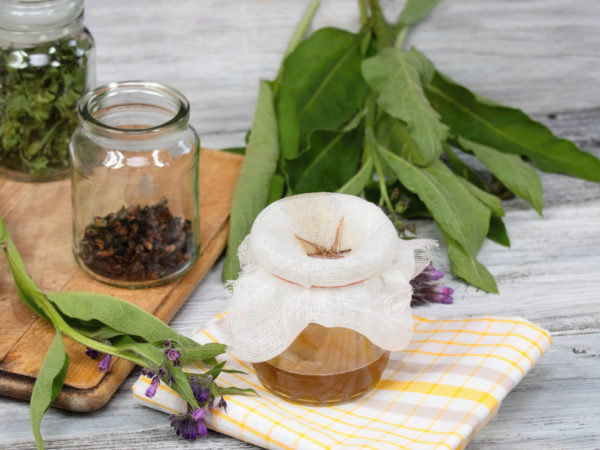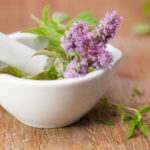Counting on Comfrey?
I recently had back surgery (a lumbar fusion). A friend suggested using comfrey root powder to speed the healing. Do you agree? How much should I take?
Andrew Weil, M.D. | July 31, 2003

Updated on 6/22/2005
Lumbar fusion, like other types of spinal fusion, involves “welding” together two or more of the vertebrae in the spinal column with bone grafts and metal rods to eliminate motion between them that is causing pain or deformity. More than 130,000 lumbar fusions were performed in 1999, according to the American Academy of Orthopaedic Surgeons.
Typically, the surgical wound from these operations heals in about two weeks, and is not the kind of complicated, slow-healing wound for which I would recommend comfrey (Symphytum officinale). However, comfrey does have a well-deserved reputation for healing injured tissues; the genus name Symphytum means “to knit together” in Greek. The healing effects are thought to come from allantoin, a substance that makes cells proliferate, and rosmarinic acid, an anti-inflammatory. Unfortunately, these compounds occur together in comfrey with toxins called pyrrolizidine alkaloids (PAs). For this reason, comfrey should never be taken by mouth; it can cause serious liver and lung damage.
I do recommend external use of comfrey as a treatment for wounds that do not heal easily such as bedsores (decubitus ulcers), diabetic ulcers, the bites of brown recluse spiders and the terrible staph infections that can affect people living on tropical beaches. To treat these wounds with comfrey, buy the dried root of the plant in bulk, grind it into powder in a blender and mix the amount you need into a paste with water or, better, with aloe vera gel. Then gently pack it into the wound and cover with a bandage. Change this poultice daily, washing out the wound with sterile water and with hydrogen peroxide if any infection is present.
Andrew Weil, M.D.










